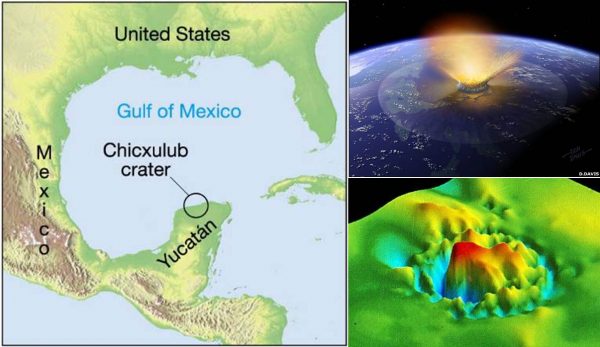CHICXULUB PUERTO – A three-faced monolith and a rock hewn in the shape of a bone with a misspelled text carved on it mark the site in this town on Yucatan’s coast where the impact of a giant meteorite 65 million years ago initiated the massive extinction of Cretaceous-era species.
The monument, with crude depictions of dinosaurs, can be found in the central square, facing the church and police station in Chicxulub Puerto, a town of 10,000 some 35 kilometers (19 miles) north of Merida, and away from the tourism hotspots of Cancun and Cozumel.
This is the site, according to scientists, where a 10-kilometer (6.2-mile) wide meteorite impacted Earth, triggering climate change that killed entire species, including dinosaurs.
“I’d like to have this known more widely, so that more people would come to visit and for my children to have more information,” Abigail, born in Tamaulipas but a resident of Chicxulub Puerto for the past seven years, told EFE.
“But (the crater opened by the meteorite) has not received much attention,” she said.
Agustin Figueroa, a local official, said “many other towns invest in advertising.”
“We already have it, because Chicxulub is known around the world. Our real problem is the authorities’ disregard. They do not allow us to be what we want to be. We want to elevate our quality of life,” Figueroa said.
Luis Rosado, a retired teacher who now works as a driver for tourists, said “many people come here thinking they will find a big hole, when in fact we are at the center of a crater that spreads over 80 kilometers (50 miles), extending to the sea and past the city of Merida.”
In fact, scientists have actually estimated the crater’s diameter at 200 kilometers (130 miles) and its depth at 16 kilometers (10 miles).
The impact unleashed energy equivalent to 5 billion Hiroshima-type atomic bombs, causing 1,000-meter (3,275-foot) tsunamis that reached present-day Texas.
The collision caused what scientists call a “nuclear winter,” with temperatures dropping and photosynthesis blocked, wiping out vegetation and species that fed on plants.
Source: latino.foxnews.com via EFE




